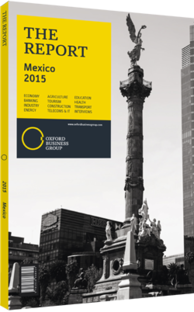Luis Videgaray Caso, Minister of Finance and Public Credit: Interview

Interview: Luis Videgaray Caso
How many extra taxpayers did the reforms bring in?
LUIS VIDEGARAY CASO: The number of registered taxpayers showed an average annual growth of 7.6% for the 2011-13 period, while for 2014 it was 11.1%. This increase is due to two major changes regarding the registry of new taxpayers. First, the creation of a new simplified regime for small-scale taxpayers will provide a gradual transition into the general tax regime. Second, the Tax Administration Authority introduced a major simplification of the registration process that a taxpayer must go through. Streamlined online procedures allow the taxpayer to obtain a tax identification number expeditiously and to achieve tax compliance quickly. Effective as of fiscal year 2014, it is mandatory for companies to issue electronic invoices in order to facilitate the automatic deduction of salary expenses. As a result, the monthly average of new taxpayers registered totalled more than 250,000 during 2014, 49% above the average figure for the entire 2011-13 period combined.
One of the objectives of the fiscal reform is to reduce the number of people employed in the informal sector. This aim can be achieved only through effective coordination among the various government institutions that grant benefits to compliant taxpayers who voluntarily choose to integrate into the formal sector.
What effect did tax reform have on spending?
CASO: Consumer spending decelerated in the first months of 2014. However, the slowdown was transitory and moderate, and fully consistent with the reasoning behind the measures instituted in the reform. The evidence indicates that by the second half of 2014 any negative impact the tax reform may have had on spending will have vanished. The reform included measures designed to produce a permanent reduction in the consumption of certain products.
The new excise taxes on fossil fuels, sugar-sweetened beverages and high-calorie foods were intended to reduce the consumption of these harmful products and change the consumption patterns of the general population. Existing evidence indicates that this goal was achieved. Since this one-time adjustment took place, there have been clear signs of a solid recovery in total consumption. Retail sales in December displayed an annualised growth of 5.6%, the highest since March 2012. Moreover, the consumption of durable goods has displayed historical growth rates. In December 2014 domestic sales in the automotive market grew at an annualised rate of 11.7%, the second largest increase since the indicator was first published.
The evolution of consumption is consistent with the design of the reform, which was designed to ensure that all citizens contribute to public revenues according to their income and financial circumstances. For instance, the new brackets of the marginal personal income taxes affect only the top 1% of the income distribution, and more than 50% of the additional tax collection comes from the top 10%. The reform has increased revenue while preventing any significant impact on the lower and middle classes. Based on what we have seen in 2014, we do not expect the tax reform to have any influence on consumer spending in 2015.
What cooperation exists between Mexico, the US and Canada to combat tax evasion?
CASO: The tax authorities of the three countries employ several channels of collaboration to fight tax evasion. One of these is the exchange of tax information initiative. A number of cases have been prosecuted, and thanks to the high level of cooperation the results have been quite satisfactory. Mexico has tax treaties to avoid double taxation with both countries as well as an agreement for the exchange of information with the US. In addition, since 2013 there has been an intergovernmental agreement (IGA) in force between Mexico and the US to comply with the provisions of the Foreign Account Tax Compliance Act. The IGA was implemented in Mexico in 2014 and the first automatic exchange of financial information will take place in 2015. A similar agreement with Canada is still pending.
You have reached the limit of premium articles you can view for free.
Choose from the options below to purchase print or digital editions of our Reports. You can also purchase a website subscription giving you unlimited access to all of our Reports online for 12 months.
If you have already purchased this Report or have a website subscription, please login to continue.

